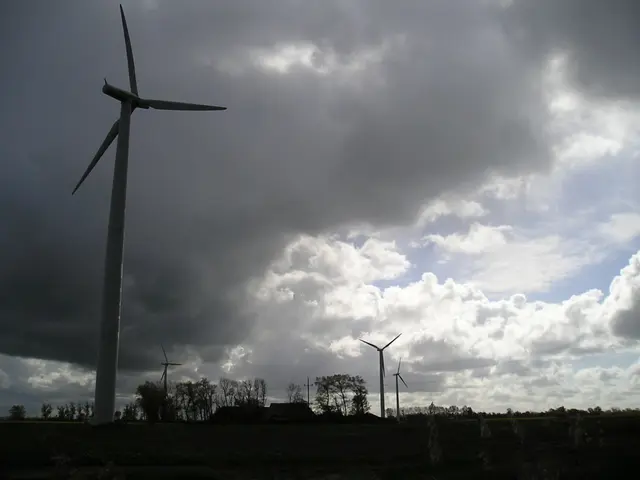Obstacles and prospects in shaping energy infrastructure
Russia's power system is gearing up to meet the growing demand for electricity from data centers, a trend paralleling global developments where new AI data centers are projected to reach a capacity of about 112 GW within the next five years. This surge in demand is driven by the expansion of AI foundational models and associated infrastructure needs.
The increasing capacity of data centers worldwide, including in Russia, poses a challenge in finding a free node in the distribution network. Some data centers are planning to commission facilities of 50-100 MW and above, which could strain the current infrastructure.
To address these issues, the power system needs to develop strategies to reduce connection times for data centers, create reserves, and plan for rapid energy supply restoration. Connecting data centers to transmission lines rather than distribution networks significantly increases the chances of connecting within the required timeframe.
The energy sector in Russia needs constant improvement of regulation based on customer feedback to meet the requirements of the present day. Downtime for data centers can cost over $100 million per incident, and sometimes up to $1 billion in lost revenue, underscoring the importance of a reliable energy supply.
Technological connection and approvals for data centers can still take years, even with available formal capacity. This is a concern for data centers, which are among the most demanding consumers and expect a flexible and customer-centric approach.
Voltage drops of up to one minute, as allowed by GOST, can cause production issues and no one bears financial responsibility for these drops. Many data center owners are willing to build lines and step-down substations at their own expense to shorten launch times.
International studies show that around 43% of all data center outages are due to power supply disruptions. Power shortages, overloaded networks, and regulatory inertia are challenges facing current data center clients in Russia.
The Russian data center market is expected to grow significantly in the coming years, primarily due to the development of artificial intelligence. Meeting the demands of data centers could lead to gaining new customers and allies in the modernization of the entire industry.
Sergey Emelyanov, General Director of "Transneftenergo", emphasizes the need for a dialogue to address the challenges and opportunities presented by data centers for the power system. Electricity supply is a key resource for data centers, for which they are willing to pay.
The power system may risk being left behind as the digital economy moves forward if it cannot meet the demands of data centers. The volume of data center connections in Russia is currently estimated at 1-2 GW. Despite these challenges, the potential benefits for both the data center industry and the power system make it a priority to find solutions.
Read also:
- Strategic approach to eco-friendly nickel production for electric vehicles in Europe
- Solar energy company, Imperium, alongside QORAY Mobility & Energies Solar Business, bolsters Nigeria's environmental future by producing superior solar panels domestically and offering flexible payment options.
- AI Inspection Company, Zeitview, Secures $60 Million Funding for Expansion
- Quarterly Market Review Q2 2023 Update








